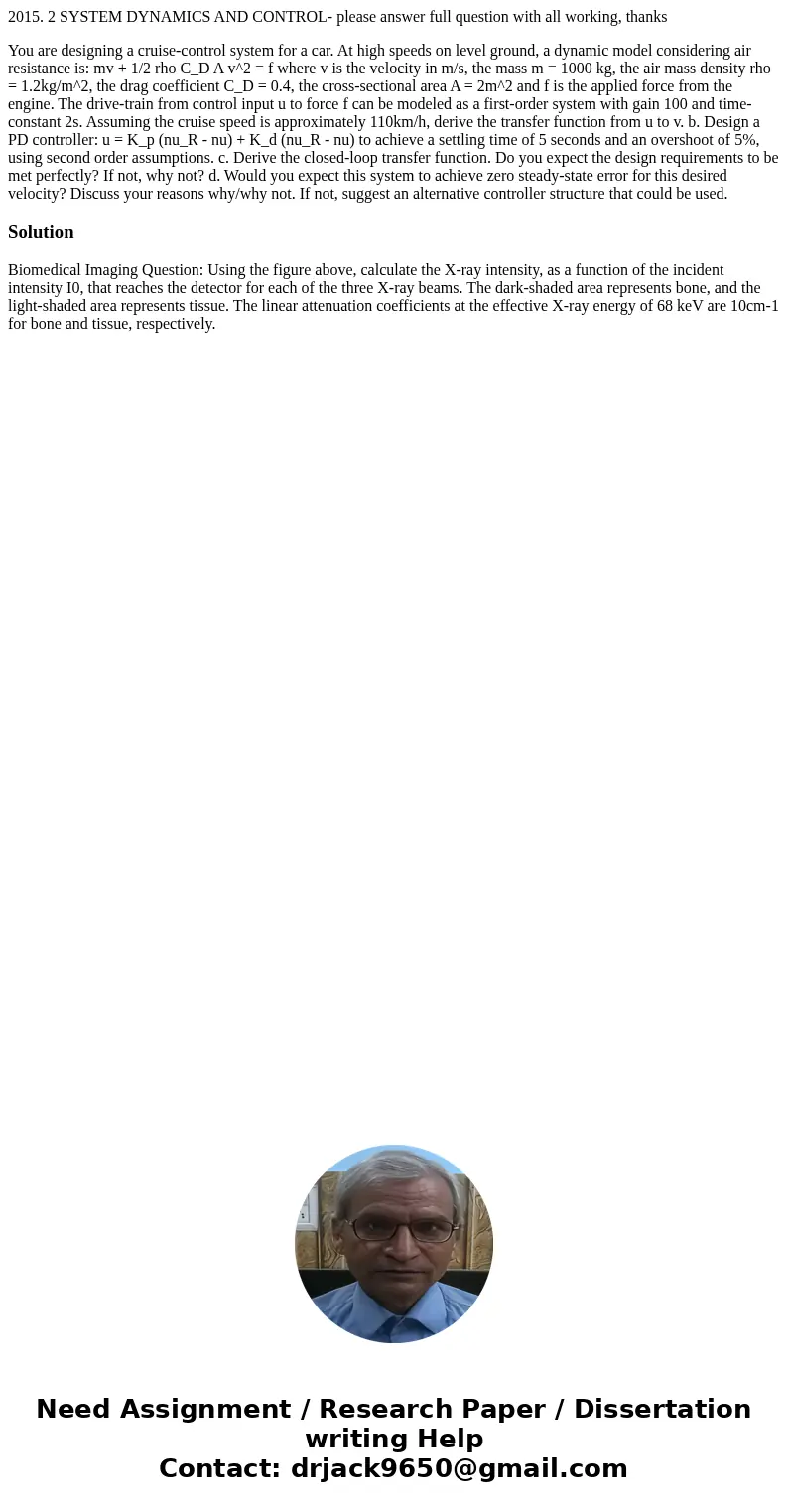2015 2 SYSTEM DYNAMICS AND CONTROL please answer full questi
2015. 2 SYSTEM DYNAMICS AND CONTROL- please answer full question with all working, thanks
You are designing a cruise-control system for a car. At high speeds on level ground, a dynamic model considering air resistance is: mv + 1/2 rho C_D A v^2 = f where v is the velocity in m/s, the mass m = 1000 kg, the air mass density rho = 1.2kg/m^2, the drag coefficient C_D = 0.4, the cross-sectional area A = 2m^2 and f is the applied force from the engine. The drive-train from control input u to force f can be modeled as a first-order system with gain 100 and time-constant 2s. Assuming the cruise speed is approximately 110km/h, derive the transfer function from u to v. b. Design a PD controller: u = K_p (nu_R - nu) + K_d (nu_R - nu) to achieve a settling time of 5 seconds and an overshoot of 5%, using second order assumptions. c. Derive the closed-loop transfer function. Do you expect the design requirements to be met perfectly? If not, why not? d. Would you expect this system to achieve zero steady-state error for this desired velocity? Discuss your reasons why/why not. If not, suggest an alternative controller structure that could be used.Solution
Biomedical Imaging Question: Using the figure above, calculate the X-ray intensity, as a function of the incident intensity I0, that reaches the detector for each of the three X-ray beams. The dark-shaded area represents bone, and the light-shaded area represents tissue. The linear attenuation coefficients at the effective X-ray energy of 68 keV are 10cm-1 for bone and tissue, respectively.

 Homework Sourse
Homework Sourse